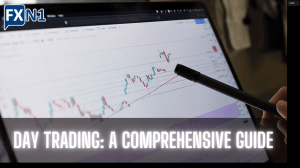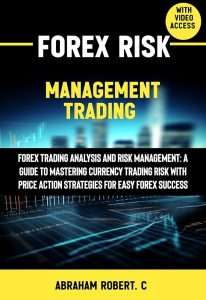A Comprehensive Guide to Forex Trading
Unlock the secrets of the Forex market! Learn essential trading strategies, master technical analysis, and navigate the world of currency exchange with confidence. Become a Forex pro!
The foreign exchange market, or Forex, is the largest and most liquid financial market globally. It operates 24 hours a day, five days a week, providing unparalleled opportunities for traders of all skill levels. However, success in Forex trading requires a deep understanding of market dynamics, technical analysis, and robust risk management strategies. This comprehensive guide will delve into the essential aspects of Forex trading, equipping you with the knowledge and tools to navigate this dynamic environment effectively.
Understanding the Forex Market
The Forex market is decentralized, meaning it doesn’t have a central physical location. Trading occurs electronically between banks, institutions, and individual traders worldwide. The primary function of the Forex market is to facilitate the exchange of currencies. This constant exchange creates a dynamic and ever-changing landscape, influenced by a multitude of economic, political, and social factors.
Major Currency Pairs and Their Influence
Forex trading primarily involves trading currency pairs, such as EUR/USD (Euro/US Dollar) or USD/JPY (US Dollar/Japanese Yen). Each pair’s value fluctuates based on the relative strength of the two currencies involved. Understanding the economic factors influencing these currencies is crucial for successful trading. For example, interest rate changes in a particular country can significantly impact its currency’s value. Furthermore, geopolitical events and news releases can cause dramatic shifts in currency prices, creating both opportunities and risks for traders.
Fundamental Analysis in Forex Trading
Fundamental analysis involves examining macroeconomic indicators and economic data to predict future currency movements. This includes factors like inflation rates, interest rate decisions by central banks, government debt levels, and economic growth forecasts. Analyzing these indicators can provide insights into the long-term trends and potential shifts in currency values. However, relying solely on fundamental analysis can be limiting, as unexpected events can significantly impact market sentiment.
Technical Analysis: Charting Your Course to Success
Technical analysis focuses on using historical price data and chart patterns to identify potential trading opportunities. Traders use various technical indicators, such as moving averages, relative strength index (RSI), and Fibonacci retracements, to identify trends, support and resistance levels, and potential reversal points. Technical analysis complements fundamental analysis, providing a more holistic view of the market.
Key Technical Indicators and Their Applications
Understanding common technical indicators is essential for effective technical analysis. Moving averages, for instance, smooth out price fluctuations, helping identify trends. The RSI measures the momentum of price changes, indicating overbought or oversold conditions. Fibonacci retracements identify potential support and resistance levels based on mathematical ratios. Each indicator provides unique insights, and combining them can enhance trading accuracy.
- Moving Averages: Identify trends and potential support/resistance levels.
- Relative Strength Index (RSI): Gauge market momentum and identify overbought/oversold conditions.
- Fibonacci Retracements: Identify potential support and resistance levels based on mathematical ratios.
- Candlestick Patterns: Recognize visually distinct patterns that often precede price movements.
Risk Management: Protecting Your Capital
Effective risk management is paramount in Forex trading. Losses are inevitable, but proper risk management strategies can minimize their impact and protect your capital. This involves setting stop-loss orders to limit potential losses, using leverage responsibly, and diversifying your portfolio. Never invest more than you can afford to lose.
Leverage and its Implications
Leverage magnifies both profits and losses. While it can amplify gains, it also significantly increases the risk of substantial losses. Understanding leverage and using it responsibly is crucial. Traders should carefully assess their risk tolerance before using leverage and avoid excessive leverage that could lead to significant financial setbacks. Proper position sizing is crucial for managing leverage effectively.
Stop-Loss Orders: Your Safety Net
Stop-loss orders are essential for risk management. They automatically close a trade when the price reaches a predetermined level, limiting potential losses. Setting appropriate stop-loss orders is critical to protect your capital and prevent substantial losses from unexpected market movements. The placement of stop-loss orders should be carefully considered, factoring in market volatility and your risk tolerance.
Trading Strategies: Finding Your Approach
Numerous trading strategies exist, each with its own approach and risk profile. Scalping involves taking quick profits from small price movements. Day trading focuses on holding positions for a single trading day. Swing trading involves holding positions for several days or weeks, capturing larger price swings. Long-term investing focuses on holding positions for extended periods, capitalizing on significant market trends.
Developing a Personalized Trading Plan
A well-defined trading plan is essential for consistent profitability. This plan should include your trading goals, risk tolerance, preferred trading strategies, and money management rules. Regularly reviewing and adjusting your trading plan is essential to adapt to changing market conditions and refine your approach. Discipline and adherence to your trading plan are crucial for long-term success.
- Define your trading goals: What are your financial objectives?
- Assess your risk tolerance: How much risk are you comfortable taking?
- Choose your trading strategy: Which approach best suits your style and goals?
- Establish money management rules: How much capital will you allocate to each trade?
Backtesting and Paper Trading: Refining Your Skills
Before risking real capital, it’s crucial to test your trading strategies through backtesting and paper trading. Backtesting involves using historical data to simulate trades and assess the performance of your strategies. Paper trading allows you to practice trading in a risk-free environment, using virtual money to execute trades and gain experience without financial consequences. These methods are invaluable for refining your skills and improving your trading effectiveness.
Staying Informed: The Importance of Market News and Analysis
The Forex market is constantly influenced by global events and economic news. Staying informed is crucial for making informed trading decisions. Following financial news sources, economic calendars, and market analysis reports can provide valuable insights into potential market movements. Understanding how different news events impact currency prices is essential for successful trading.
The Psychology of Trading: Mastering Your Emotions
Successful Forex trading requires emotional discipline. Fear and greed can lead to poor decision-making, resulting in losses. Developing a disciplined approach, managing emotions effectively, and sticking to your trading plan are crucial for long-term success. Learning to control emotional impulses is as important as understanding technical and fundamental analysis.







